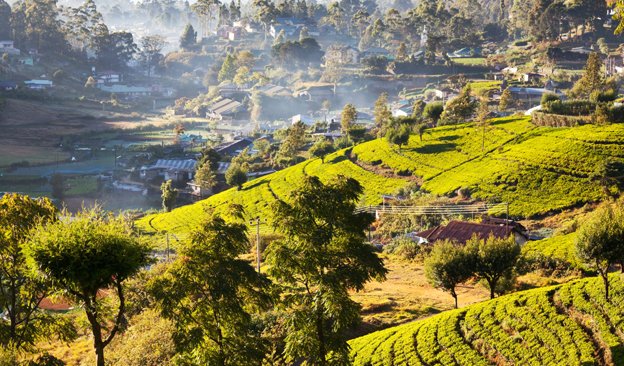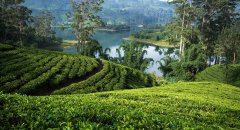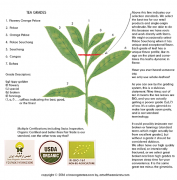Which country is Sri Lanka closest to? How long will the boiled Ceylon tea last?
Really watch one of the world's best thriller writers witness the rise of the Ceylon tea industry and the lush Ceylon tea plantation station in Sri Lanka to witness a group of indomitable courage to develop tea planters and choose to grow tea. throw lemons in life. The first tea garden in Sri Lanka was initiated by James Taylor, a Scot, who planted tea seedlings from Assam, India, on 19 acres of his Loolecondera tea plantation in Kandy in 1867. Taylor has been experimenting with tea plantations in Sri Lanka since the 1850s and seized the opportunity to expand the new crop, when most of Sri Lanka's thriving coffee plantations were destroyed by the rapid spread of coffee rust. Over the next decade, Ceylon's coffee plantations were completely destroyed by rust, and Ceylon is the world's main source of coffee demand. When nearly 1700 colonial coffee growers returned to the UK, 400 indomitable souls stayed in the UK to drink tea and fight their own destiny. Meanwhile, Taylor is experimenting with the method of producing tea on the balcony of his bungalow. During his stay in North India, Taylor taught himself the basics of tea production, equipped with homemade machines, and began tea production on his estate. He also tried to improve the two methods of picking leaves and buds, and tried to fine-tune every step of the tea production process. His first batch, worth 23 pounds, was sold locally and was hailed as delicious, prompting Taylor to ship his second batch of bulk tea to London for auction in 1875. From then on, the fate of Ceylon tea began to take off and became one of the most popular drinks in the world.

By 1890, colonial Ceylon had exported 22900 tons of Ceylon tea, and Thomas Lipton came to the coast of Sri Lanka to buy more tea-growing land. With the accelerated development of tea gardens in Sri Lanka and the increasing demand for efficient and cheap labour, the East India Trading Company has brought in South Indian families as tea pickers and hard-working workers in the blooming tea gardens in Sri Lanka. With the help of suitable climatic conditions, fertile soil in the Sri Lankan highlands and the sweat and blood of South Indian workers, Sri Lanka's tea industry has gradually become one of the largest tea industries in the world. In order to increase the output and output of Ceylon tea, the Tea Research Institute (TRI) was established in 1925. Ceylon tea is conquering the global tea market. By 1927, the country's annual tea exports reached 100000 tons. Although Ceylon tea production is driven by local energy and resources, the management, trade and ownership of the Sri Lankan tea industry was held by the British until 1941, when the first locally owned tea brokerage companies, Manners Pieris and Abeywardena, were established in Colombo. In 1955, extensive research on tea was rewarded, the first cloned tea field was cultivated, and an era was born. High-yield and high-quality tea varieties with disease resistance became the call of the times. By the 1960s, Sri Lanka's tea planting area had reached 200000 hectares, with an annual output of 200000 tons. In 1963, as instant Ceylon tea entered the global tea market, Sri Lanka became the world's largest tea producer in 1965. In the 1970s, the change in the country's political direction gave way to the nationalization of private property, and most of the country's private tea gardens were nationalized and incorporated into the Sri Lankan Tea Council (SLTB). The injection of innovative new energy into the Sri Lankan tea industry led to the import and re-export of value-added and blended tea and launched the Ceylon green tea industry. Sri Lankan tea industry also uses extrusion, tearing and crimping (CTC) tea processing methods to produce black tea. After nearly 125 years after the launch of the tea industry in Sri Lanka, tea plantation ownership and management is returning to the private sector to create a new generation of Sri Lankan tea traders and planters, who are combining local resources with international knowledge in Ceylon Tea, to create a new era in which China now has a $1.5 billion export market and is the world's largest tea supplier.
Important Notice :
前街咖啡 FrontStreet Coffee has moved to new addredd:
FrontStreet Coffee Address: 315,Donghua East Road,GuangZhou
Tel:020 38364473
- Prev

How does Earl Dilma Ceylon black tea, a famous Sri Lankan tea garden brand, be brewed and tasted?
Ceylon tea and tourism are one of Sri Lanka's top five sources of overseas income, and their combination can create a unique experience as refreshing as a cup of Ceylon tea. Therefore, Ceylon tea and tourism are the perfect partner for tango. Ceylon Tea Garden has a rich heritage and a unique cultural mix of Sri Lankan tea production.
- Next

Why is Sri Lankan Ceylon black tea the cleanest in the world? How much is a cup of Ceylon black tea?
With the phase out of methyl bromide, a pesticide widely used in tea cultivation, which is harmful to the ozone layer, now is the best time to enjoy a cup of fresh and ozone-friendly Ceylon tea. A long-term study aimed at improving the environmental sustainability of the tea industry in Sri Lanka has yielded results after Sri Lankan tea farmers stopped working in local tea gardens.
Related
- Being chased out of the rain in front of Starbucks?! Store: Sheltering from rain under umbrellas poses a safety hazard
- The white moonlight has changed?! Lucky launches "Big Winter Pear American"
- Hand-brewed coffee three-stage method, high-sweet and universal brewing method to share! What does the high sweet water level of hand-brewed coffee mean?
- What is the difference between raw, refined and full espresso coffee? How to extract espresso and taste good?
- A complete list of coffee bean names and their meanings! What is Yejia Shefi coffee? Where is Mantelin coffee?
- What grade does Arida Manor Kaduai coffee beans belong to? What treatment is Arida ASD slow anaerobic sun exposure?
- The milk tea cup becomes smaller?! Overlord Tea Girl launches a new "Return to Yunnan" series
- Accused of selling counterfeit and high-priced coffee beans! Well-known boutique coffee brand "Oukelao" bowed and apologized!
- How to make espresso dumplings? Can I eat coffee and glutinous rice balls together?
- Save the unformed and stagnant powder cakes in one second! What is the problem with stagnant water in the powder bowl of the espresso machine?

